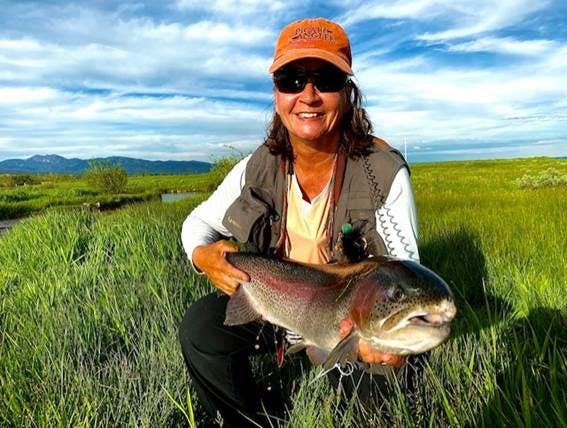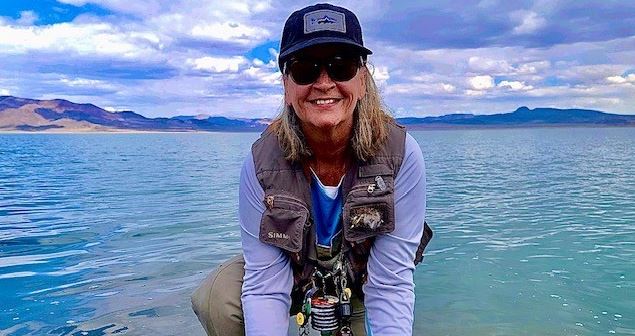There’s something fishy about Sandy Briggs.
Two important pieces of her life might sound the same, but their functions are quite different. Briggs is a cybersecurity administrator and project manager at Idaho National Laboratory. Part of her job is to help employees recognize suspicious emails. She teaches staff members to recognize phishing, the tactic of trying to get people to click on malicious links in an email. In her off-time, Briggs spends many hours fishing – fly fishing, to be exact. It’s a passion she has enjoyed since she was 5 years old.

Some folks watch the calendar crawl waiting for retirement, but Briggs loves her job. A lot of people might wait for retirement to start enjoying their hobbies, but Briggs fishes four to five times a week – often out-fishing those around her. That includes her husband Van Briggs, who also works at INL. The two had been married about five years when Van turned to Sandy and said, “Honey, I do believe you like to fish more than I do.” They are going on 40 years together, and fishing has been the glue that holds their marriage together.
If you were friends with Briggs on Facebook, you would see many photos of her with her catches. Right after the shutter closes, though, she returns the fish to the water. She says she hasn’t kept a fish for close to 30 years, with the exception of steelhead trout, which she finds especially delicious.

In most of her photos, you also will see amazing scenery. “I love fishing because it’s a great way to get outdoors, and I have never been fishing in an ugly place,” she said. One of her favorite local fishing spots is Sheridan Ranch in Island Park. It is private property where you have to pay to fish, but it’s a great place to take visitors. She catches Kamloops rainbow trout there, which like to fight and get “really big.” She also fishes frequently in Yellowstone National Park.
Briggs also uses her passion on the water to help those in challenging health circumstances. She is part of a program that teaches women who are in some stage of breast cancer treatment how to fish. Casting for Recovery promotes connection with nature and other women. “Many of these women have never held a fishing rod,” she said. “The motion of casting a rod uses muscles that are affected by surgery, so it’s great physically and emotionally.” She has made close friends through the program and stays in touch when they return home. Briggs says that giving back by teaching these ladies “gives her good fish karma.”

That ability to teach about fish translates to her office life, where she teaches employees about phish. Much of her work is focused on helping INL staff members recognize malicious messages that could harm INL cybersecurity. To maintain the lab’s security, Briggs has taken lead on a few noteworthy items. She was the project manager for INL’s Amazing Fish Race, and she created the Phish Identification Chart and the Phish Tank. These projects have helped INL employees learn the patterns of phishing emails, and they have given workers a strategy to be more attentive when reviewing their messages.
Briggs also loves the strategy of fishing. She keeps a journal where she notes the weather, date(s), flies used with success and water temperature. Her dedication to the details pays off. She catches at least one fish pretty much every time she goes out, but often more.
She knows she’s getting better because she’s catching bigger fish. “A big fish has been around for a while. It is smart and has avoided getting caught – so far,” says Sandy. “I love the challenge of outsmarting a fish – especially a big fish on a fly rod.” And in the office, she uses that tactic to help employees understand and catch big phish, keeping INL secure.
Hobbies are fulfilling, and fulfilled people make more productive employees. Hobbies unearth hidden skills, alleviate stress, unite you with others, and improve quality of life — all things that will help you function better at work. See other stories about Idaho National Lab employees.





